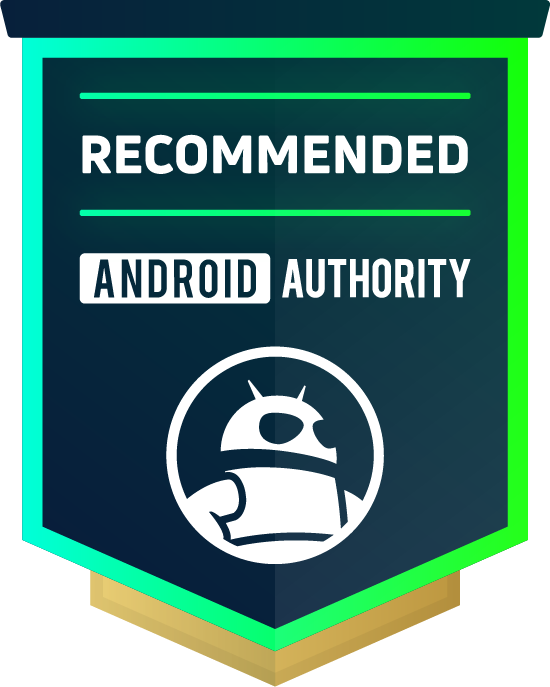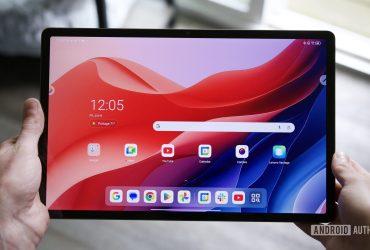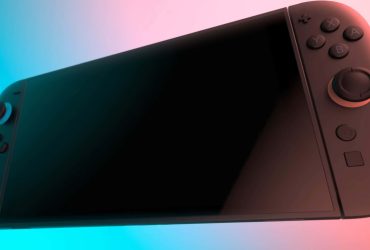
Contents

Lenovo Legion Go S – Powered By Steam OS
The Lenovo Legion Go S with Steam OS is light years ahead of its Windows-powered counterpart. Not only does Steam OS fix a lot of Windows’ problems, but it also drops the price by $130. This makes the Legion Go S with Steam OS a viable competitor to the Steam Deck. It’s well worth a look if you prioritize a large display, variable refresh rates, and offset sticks.
When I reviewed the Lenovo Legion Go S — the one powered by Windows 11 — I did something I rarely ever do: I told readers not to buy it. No matter how I approached the product, I couldn’t recommend it to anyone due to the ubiquitous availability of better, cheaper gaming handhelds. In that review, I mentioned that I was excited to try the second version of the product, the one powered by the Linux-based Steam OS — the same operating system that powers Valve’s Steam Deck. Well, Lenovo was kind enough to send me a test unit of the Lenovo Legion Go S with Steam OS, and I’m excited to tell you all about it.
Given that this product’s hardware is exactly the same as the Windows variant (other than the change in button names and case color), I won’t spend time re-explaining everything. If you need to catch up on what this product offers from a hardware perspective, read my Legion Go S review first. My colleague Hadlee Simons’ hands-on with the Steam OS version at CES 2025 is also worth a read (anything he writes is).
With that in mind, I will split this review into two sections: the first covering what Steam OS fixes, and the second explaining what Steam OS couldn’t change.
What Steam OS fixes for the Legion Go S

C. Scott Brown / Android Authority
The most significant and positive thing Steam OS does for the Legion Go S is simplify the experience. When you power up the Steam OS version of the Legion Go S, you’re not greeted with any familiar Windows tropes. You don’t need to log in with your Microsoft account or tell it your preferred keyboard layout. You never see a desktop interface. You do need to go through an initial setup procedure, obviously, but you can navigate through every step with the controller and a smartphone for scanning QR codes — something that can’t be done with Windows.
From the time you first boot up the Legion Go S with Steam OS, you immediately understand how this is better than Windows.
Essentially, Steam OS is an operating system built for this particular form factor, whereas Windows is decidedly not (or at least until we know if the Xbox experience on the ROG Xbox Ally finally fixes things). That alone makes the experience using the Legion Go S with Steam OS much, much better than its Windows counterpart.
Even when a wrench is thrown into the works, Steam OS handles it with grace. For example, if you want to play Red Dead Redemption on the Legion Go S, you must use Rockstar Games’ stupid (and useless!) launcher. This launcher lacks controller support, which Valve cannot change. So, what Steam OS does in response is warn you that the Rockstar Games launcher lacks controller support and instructs you to use the touch screen instead. It’s not perfect, but it’s a simple, elegant way of informing the user how best to navigate through this process, since their intuitive reaction — to use the sticks and buttons — will prove ineffective.
Steam OS is also better at the seemingly minor actions one takes when using a large-screen gaming handheld. When you want to stop playing, you just tap the power button. The screen goes dark, and you can put the machine down. You can leave it like that, unplugged, for hours (or even days), and then pick it up, tap the power button, and continue right where you left off. The Windows model doesn’t do this nearly as smoothly, and Windows’ idle state drains way too much battery for that to be a good idea anyway. For the record, I did this overnight with the Steam OS model, and the battery level only dropped by 3%. At that rate, I could have left it alone for over a week and not needed to be concerned at all.
It’s astonishing how much better Steam OS is in an idle state when compared to Windows.
One interesting thing Steam OS does is nerf the teeny, tiny trackpad on the Legion Go S. In my review for the Windows model, I lamented how small and useless the trackpad is on this machine (it’s still there on the Steam OS version — the small square under the right stick). In all my time with the Steam OS version, though, I never once got the trackpad to work. Even when I was setting up the Rockstar Games launcher, which is built around keyboard and mouse input, the trackpad didn’t function. I feel like Valve was as perplexed with this “feature” as the rest of the world, and just decided to nerf it rather than instruct users to touch it. In fact, Steam OS didn’t let me use the trackpad even when I played games that support mouse input. I realize this is a weird way to approach the issue of the trackpad being so horrible, but honestly, I didn’t mind. After a few hours, I simply forgot it existed.
Steam OS also makes it easier to tweak your settings to milk the most out of your games. In most cases, though, you don’t need to do this. This is because Valve has pre-configured Steam OS to change in-game settings to work best with gaming handhelds automatically. For example, all in-game settings are maxed out when I fire up my latest save in Horizon Forbidden West on my custom gaming rig with an RTX 4090 inside. When I played Forbidden West on the Legion Go S, though, Steam OS automatically switched to the “Low” graphics quality preset and tweaked the display settings appropriately. It just worked.
Steam OS does a lot of the legwork for you when it comes to making sure your games play well.
If you want to get more granular with your settings, Steam OS supports that and makes it incredibly easy. You can tweak performance settings on a universal or per-game basis by hitting the Quick Access Button (signified by three dots and located at the upper right, above the Menu/Start button). This includes enabling a variable refresh rate (something no version of the Steam Deck offers), limiting the thermal design power (TDP), changing scaling levels, and much more. You can also show performance stats while you play, and Steam OS lets you choose how much of this information you see.

C. Scott Brown / Android Authority
Granted, the Windows version of the Legion Go S offered some of these features through Lenovo’s own apps and widgets. However, in Windows, they weren’t as easily accessible and not nearly as granular. Also, you don’t need to use these on the Steam OS version. Like I said, the operating system does a great job of pre-configuring the system for each game you launch. But if you want to get nitty gritty to bring out the best performance you can get (or do the opposite to preserve as much battery life as possible), you can easily do that.
Speaking of battery life, this is also nominally better with Steam OS. I don’t have any numbers to share, but with this model, I didn’t reach for the charger nearly as much as I did with the Windows version. This makes a ton of sense when you remember that all the useless things Windows does in the background, Steam OS doesn’t do. I don’t want there to be any misconceptions here, though: if you’re playing a graphically demanding AAA game, battery life on the Steam OS version is going to be very similar to the Windows version — maybe 90-120 minutes of gameplay at a full charge. But when the device is just idling or you’re doing things like tweaking settings, buying games, or reading game news, battery life is tangibly better.
One of the things Steam OS does better than Windows is to cost nothing. Thanks, open-source licensing!
The most significant thing Steam OS fixes, though, is the price. Without Windows on board, the Steam OS version of the Legion Go S drops by a whopping $130 to $599. This alone makes it much more of an appealing product when compared to the Windows model, which inexplicably starts at $729. For the sake of comparison, the Steam Deck OLED with 512GB of storage costs $549.
While this is all great news, Steam OS is just software. It can’t change the hardware aspects of the Legion Go S. Steam OS also comes with its own drawbacks. This brings me to the next section of this review.
What Steam OS can’t fix

C. Scott Brown / Android Authority
While Steam OS is fast, smooth, elegant, and feature-rich, it is, at its core, not as good as Windows for wide game support. This is because many games available through Steam rely on Windows features to function properly. Since Steam OS is based on Linux and uses Proton as a compatibility layer, this leaves a swathe of very popular games unplayable natively on the Legion Go S, including Fortnite, many EA Sports games, Reign of Kings, and more. To be clear, that doesn’t mean low framerates or glitchy interfaces — that means the games literally will not launch. Ultimately, this is the ace in the hole that the Windows version of the Legion Go S has.
You’ll need to sacrifice game support with Steam OS. Heavy hitters like Fortnite won’t work without Windows.
Granted, there are ways around this limitation via Linux applications such as Heroic Game Launcher, which plays nicely with third-party game stores like Epic Games Stores, GOG Galaxy, and more. Game streaming is another good option, either from a cloud service like Xbox Game Pass or from your own Windows computer with something like Moonlight. Still, almost everything on Steam that isn’t a VR-only title will launch on a Windows handheld without any tinkering or workarounds. This is something Steam OS cannot claim, as Windows restrictions, Proton incompatibilities, and occasionally anti-cheat software do mean not everything will run well or at all. If there’s a particular game you want to play, I’d recommend you check ProtonDB to see what the status is.
Steam OS also has no effect on the hardware limitations of the Legion Go S. I’ve already talked about how Valve nerfed the teeny trackpad, but it can’t change all the other problems Lenovo introduced with this design. The whole device is still too heavy, for example. The button placement is still questionable, especially the Steam and Quick Access buttons being directly above Start and Select (I hit the wrong buttons many times during my testing). The microSD card slot is still on the bottom of the device, which could be problematic for people who like to dock their handhelds. The two USB-C ports are still right next to each other, making it tricky to plug in two things at the same time. These are all deficiencies I pointed out in my review of the Windows model, and they’re still problems on the Steam OS version.
Granted, no single one of these compromises is a deal-breaker. When you put all of them together, though, it does feel like the device is still not much better than a Steam Deck, which is $50 cheaper than Lenovo’s offering. This, ultimately, is the biggest hurdle facing this product.
Lenovo Legion Go S with Steam OS review verdict: A personal choice

C. Scott Brown / Android Authority
The Lenovo Legion Go S with Steam OS ($499.99 at Manufacturer site) is the first third-party product to run the operating system. That being the case means the only logical competitor to the Legion Go S is Valve’s own Steam Deck, specifically the 512GB OLED model ($549 at Manufacturer site). So what exactly are you getting from Lenovo that you’re not getting from Valve?
The Legion Go S has the same operating system as a Steam Deck at a very similar price. It all comes down to individual preferences after that.
The most significant thing is the display. The Legion Go S has an 8-inch 1,920 x 1,200 LCD panel, which dwarfs the Steam Deck’s 7.4-inch 1,280 x 800 OLED. Yes, OLED is superior to LCD, but resolution and size make a big difference, too. Likewise, the Legion Go S has a faster refresh rate at 120Hz (the Steam Deck taps out at 90Hz). Additionally, the Lenovo handheld supports variable refresh rates, which the Steam Deck does not.
In other words, just because the Steam Deck has OLED and the Legion Go S doesn’t, shouldn’t be the deciding factor on which is better. Lenovo’s display is terrific, regardless of the panel type.
Another thing the Legion Go S has over the Steam Deck is processing power. On paper, the AMD Ryzen Z2 Go in the Legion Go S isn’t too much better than the Steam Deck’s AMD Zen 2. However, the Z2 Go is capable of hitting much higher power draw than the Zen 2 — 28W vs 15W, respectively. This means that you can, theoretically, milk more frames from the Legion Go S than you can from the Steam Deck at the expense of battery life (and sweaty palms). You’ll need to be comfortable tweaking settings, both in-game and on the handheld itself, but if you care enough to do so, the Legion Go S should be superior regarding performance. Also, keep in mind that a second version of the Legion Go S with Steam OS is on the way, and it will have the Ryzen Z1 Extreme under the hood — a CPU that will absolutely destroy the Z2 Go and the Zen 2. However, that model will cost $899 (!!!), so buyer beware.
If you prefer a larger display, VRR support, offset sticks, and the potential for eking out more frames, maybe the Legion Go S is what you’re looking for.
Outside of these two major differences, there are minor ones as well. The Legion Go S has offset sticks, for example, something that many players prefer. There’s also an eight-way D-Pad on the Legion Go S, which could give you an edge in fighting games over the four-way D-Pad on the Steam Deck.
Really, even with the $50 difference in price taken into account, choosing between the Legion Go S with Steam OS and the Steam Deck OLED is a matter of taste. You need to decide what hardware features you prefer and then go with the model that makes the most sense for you.
The bottom line here, though, is that this is a far cry from the Lenovo Legion Go S with Windows. When you combined Windows’ cumbersome, battery-draining design with the hardware deficiencies of the Legion Go S and its way-too-high price, you had a product I couldn’t recommend to anyone. The Steam OS version, though, is a fine choice for anyone who really likes the Steam Deck but wishes that it catered a bit more to their own play style and priorities.
Lenovo Legion Go S – Powered By Steam OS
Native Steam OS integration • Large display • Great price
MSRP: $599.99
The first true Steam Deck competitor.
The Legion Go S with Steam OS is the first gaming handheld to feature the same operating system as the category-defining Steam Deck.
Positives
- Native Steam OS integration
- Large display
- VRR support
- Great price
Cons
- Too heavy
- Nerfed trackpad
- Can be game support issues
- Questionable design
What’s your reaction?
Love0
Sad0
Happy0
Sleepy0
Angry0
Dead0
Wink0










Leave a Reply
View Comments